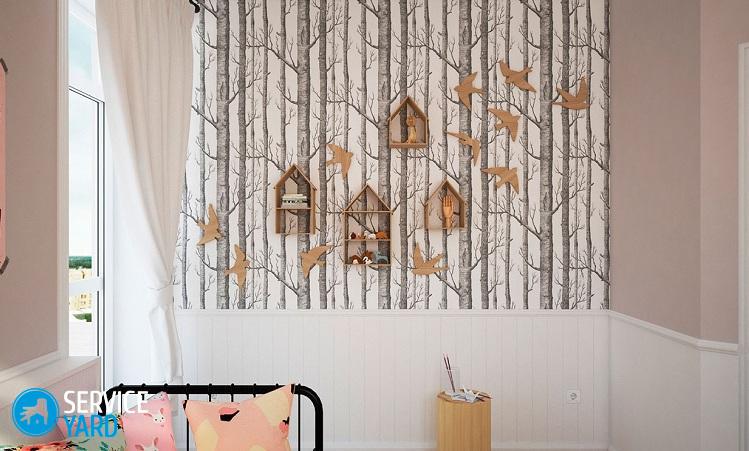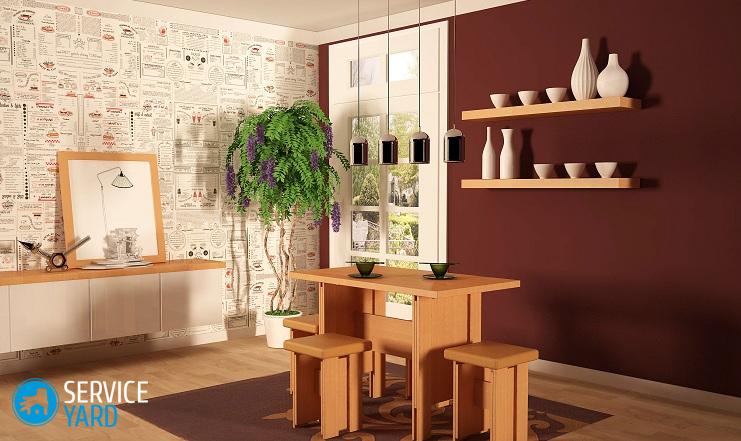How to glue corners on the wallpaper?

One of the most popular finishing materials, without a doubt - wallpaper. And those who have a mediocre idea about the process of decorating walls with these coatings often do not know that there is a finishing stage - finishing the corners of the room is considered the final stage of any repair work. To make the walls look aesthetically pleasing, you need to figure out how and how to glue the corners on the wallpaper, because poor-quality work can forever ruin the impression. From this article you will learn how to choose the best glue and how to carry out the following procedure.
to contents ↑Choose glue
To date, there is a huge variety of high-quality adhesive compositions, with which you can produce a conceived procedure. Among these compounds there are four main groups:
- Mounting glue;
- Polyurethane adhesive;
- Silicone sealant;
- Liquid plastic.
There are also two-component compositions:
- Epoxy
- Polyurethane
They must be mixed independently. Since such work is rather laborious and long, below we will consider the properties of adhesives that were listed above.
to contents ↑Liquid Nails
You do not know what glue to glue the plastic corner to the wallpaper? Use “liquid nails”. Very often this is called mounting adhesive. It is immediately worth noting that in addition to the adhesive composition, it also has a filler. It can consist of fine clay with a fairly high level of plasticity or calcium carbonate. This addition fills the voids, so that ultimately a high adhesion of the plastic is obtained, which will have an uneven surface.
Important! Such glue can have different colors, which means that it can be selected to match the color of the purchased corners.
There are two types of mounting adhesive, which differ in their basis and some secondary properties. Before you glue the corners on the wallpaper, you need to get acquainted with each of these types.
Acrylic mounting adhesive
Such glue is water-soluble, since it contains a water base.
The advantages of this composition:
- No unpleasant odor.
- Quick drying.
The disadvantages include:
- Destruction of its properties during freezing and thawing.
- Not suitable for unheated rooms.
Neoprene Liquid Nails
This composition is distinguished by its solubility. They are able to maintain all their good properties even with high humidity in the room, which means that they can be used when decorating corners in the bathroom.
The advantages of such "liquid nails":
- Faster setting when compared to acrylic.
- Ensuring the highest adhesion, even when the surface is curved like an arch.
Important! The main and probably the only drawback of neoprene glue is the pungent and unpleasant odor during drying.
Sticking technology
How to glue plastic corners on the wallpaper using “liquid nails”? Using a special glue gun, this work is quite simple:
- Degrease the surface.
- Apply the adhesive with a “snake” or dots.
- Glue the corner on the prepared place.
to contents ↑Important! The main setting lasts a couple of minutes, the final drying - about a day. If you want everything to stick faster, get quick-drying mounting adhesive.
Silicone sealant
Such material is often used instead of glue.However, many people notice that this option is not considered successful, because the corners are not just decor, in the first place, they protect the external corners of the room from external influences.
Important! If you decide that it is better to stick a plastic corner to the wallpaper with such a composition, then an ideal option would be to purchase a neutral silicone sealant.
Pros of neutral composition:
- High bonding strength.
- Glues the material to the surface for a long period of time.
The minuses include:
- High price.
- Long drying - the sealant dries in about 5 days.
Liquid plastic
This adhesive can work if your corners are made of polyvinyl chloride (PVC).
Pluses of liquid plastic:
- Perfectly sticks plastic corners to the wallpaper.
- Provides a fairly high adhesion.
Minuses:
- Often a high price.
- It is difficult to remove drops of the composition that accidentally hit the wallpaper.
Polyurethane adhesive
Not every polyurethane adhesive is suitable for the implementation of the planned procedure. Before you buy such glue in the store, you must carefully read the instructions on the tube.
The advantages of this glue:
- High bonding reliability.
- The applied strip can be adjusted.
The main disadvantages:
- Pungent, unpleasant odor.
- The high cost of the product.
- A small package.
Application Features:
- Glue is applied in a thin layer on the plane of the wall.
- They are waiting for his quick hardening.
- Then you need to press the corner to the wallpaper after 25 minutes.
to contents ↑Important! The setting of such glue takes place in 24 hours, complete drying - in 48 hours.
General algorithm of work
Before proceeding to the procedure itself, you need to figure out how to glue the plastic corners on the wallpaper. A detailed algorithm will be given below, following which one can easily carry out this procedure:
- Cut corners - as a rule, they are available for sale in stripes of 270 cm.
Important! Excesses can be cut using a clerical knife, a small hacksaw, a grinder with a metal disc, or special scissors for metal.
- Apply adhesive to the decor item or wall and press the corner to the desired location. The exception is polyurethane adhesive.
- Iron the decor with longitudinal movements - this is necessary for an even distribution of the adhesive.
- Fix the corner using masking tape.
- After the time indicated in the instructions on the tube, remove the adhesive tape and get rid of traces of glue on the wallpaper.
to contents ↑Important! If the wall is not even or there are any gaps in it, they can be easily coated using acrylic sealant.
Stock footage
Before you glue the corners on the wallpaper, you must responsibly approach the choice of glue, on which everything will be held. From this article, you learned basic information about various types of adhesive and learned how to properly trim the outer corners of a room.
- How to choose a vacuum cleaner taking into account the characteristics of the house and coatings?
- What to look for when choosing a water delivery
- How to quickly create comfort at home - tips for housewives
- How to choose the perfect TV - useful tips
- What to look for when choosing blinds
- What should be running shoes?
- What useful things can you buy in a hardware store
- Iphone 11 pro max review
- Than iPhone is better than Android smartphones





